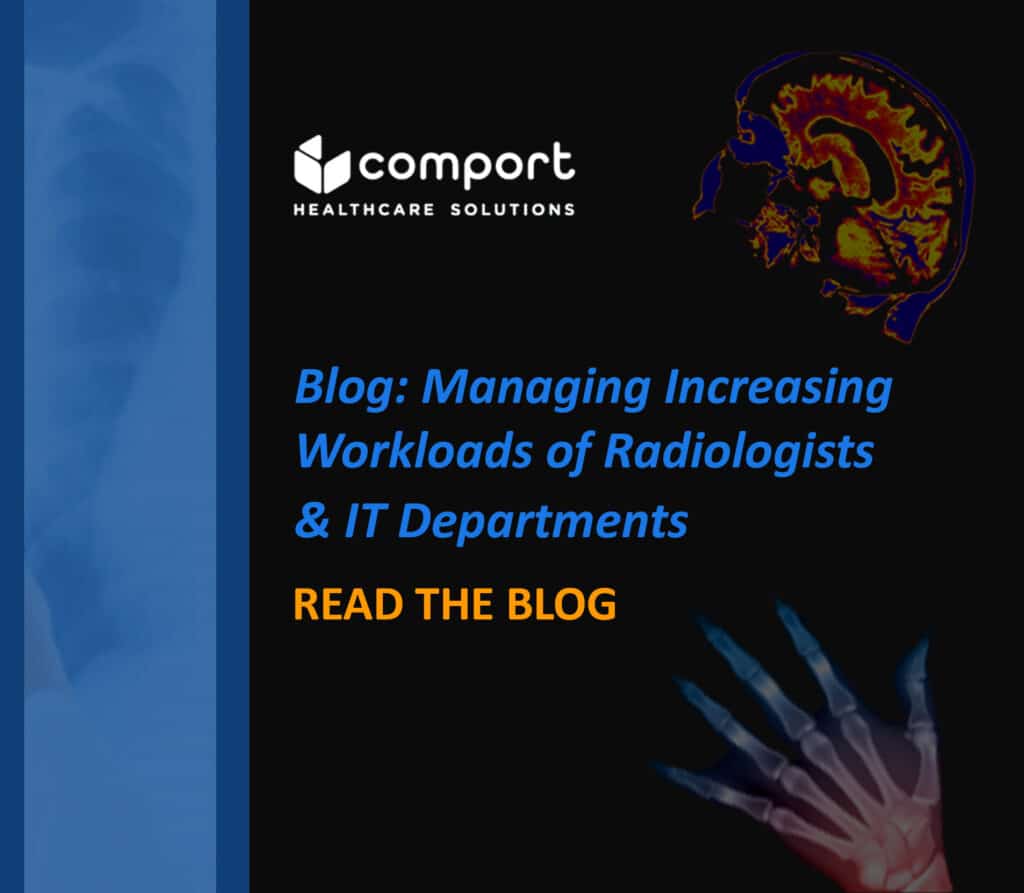The Increasing Workloads of Radiologists & IT are Creating a Need for a Medical Data Management Strategy
Teaming Up to Improve Efficiency & Quality of Life
Quality of life and the balance of ‘work and life’ – we’ve all read or heard these discussions. In the healthcare community, you’ll also see articles addressing ‘physician burnout’ as an increasing problem. This especially occurs among radiologists where workloads are increasing in parallel with the avalanche of unstructured data. As IT professionals, we face the same situation. We are all asked to do more with less and accomplish it more effectively. It is very easy to lose track of our mission as an integral part of the clinical workflow. In other words, we can’t see the forest when we focus mostly on the trees, that’s where medical data management comes in.

A recent blog published by Scality included an interview with a Radiologist. With some analysis, the impact of increasing volumes of medical data on radiologists and patient care becomes very clear.
Let’s take a look at the radiologist’s average daily workload. He or she reviews roughly 70 patient exams each day, while retrieving at least 1 prior study for each procedure. Our radiologist needs to go back at least 2 years for the priors, and in complicated cases as far 10 years. Approximately 80% of the patients have had a prior exam. That works out to roughly 150 exams per day to be reviewed. If it takes 5 minutes per exam (it probably takes longer), you end up with over 10 hours for an average day. If you, as an IT professional, save the radiologist 20% of that time, you save (or return from work to life) 2 hours per day. This is real productivity!
But what can you do to accomplish that? There are practical steps that will return great value.
Five Steps to Improve Radiology Workloads through Medical Data Management
- One thing is to spend less time on ‘speeds and feeds’ and look to ‘acceptable clinical response’. Tier1 or Tier2 storage have less performance than Tier 0, but it’s better for your wallet and response times are well within guidelines with the right structure.Expenditures can then be re-directed to infrastructure upgrades. Remember: even if your car can go 150 mph, when the speed limit is 40 you go 45 mph (we aren’t saints!)
- Increase the size of ‘inline’ storage. Most PACS systems keep 3-6 months of studies in Tier 0 cache for fast access; however most priors are 1-3 years ago. In mammography, for example, it’s not uncommon to need priors from 10 years ago. Mammography studies can be fairly large, and this is the reason for using ‘prefetch’. More studies online shorten the time for prefetching.
- Understand your data! It may seem surprising, but most sites really don’t have a good handle on their data. How much do you really have, is it in Windows shares (SMB/CIFS) or is it DICOM? Although we have been speaking about decreasing data silos for a long time, many organizations don’t know how much of their data is still siloed. How many different modalities (or image generators) have their own data storage system that might require access for clinical diagnosis? How much of the data is encrypted? Start out by doing a detailed data assessment of the entire enterprise, of course Comport can help.
- Understand the workflow! You may be storing the data and managing the hardware in IT, but the clinical folks own the data sets. Understand what data they use frequently, sometimes and never at all. Often a tiered storage strategy can be put in place to increase efficiencies on all sides.
- We talk about data siloes in the enterprise – but what about team siloes? Communication between teams, either IT, clinical or both, can go a long way towards streamlining efficiencies, improving overall operations and simplifying your mutual workplace. Quality operations and efficiencies have proven to be most important overall.
Somebody once said to me that if you sleep 8 hours per night and are 75 years old, you have slept for 25 years. Getting an hour or two back per day adds up to a meaningful surge in productivity and quality of life for everyone!
Not sure where and how to start? Comport Healthcare IT Solutions has Solution Architects with years of experience evaluating, designing and implementing solutions around medical data management. Teaming with Comport is your best step!
Author: Bill Flatley, Field CTO for Healthcare
Bill is responsible for technical strategies and recommendations for Comport’s Healthcare clients. His extensive experience includes four healthcare systems in leadership roles supporting Clinical Applications, Digital Health, and Office of the CIO as the primary liaison between IT and the business.




























